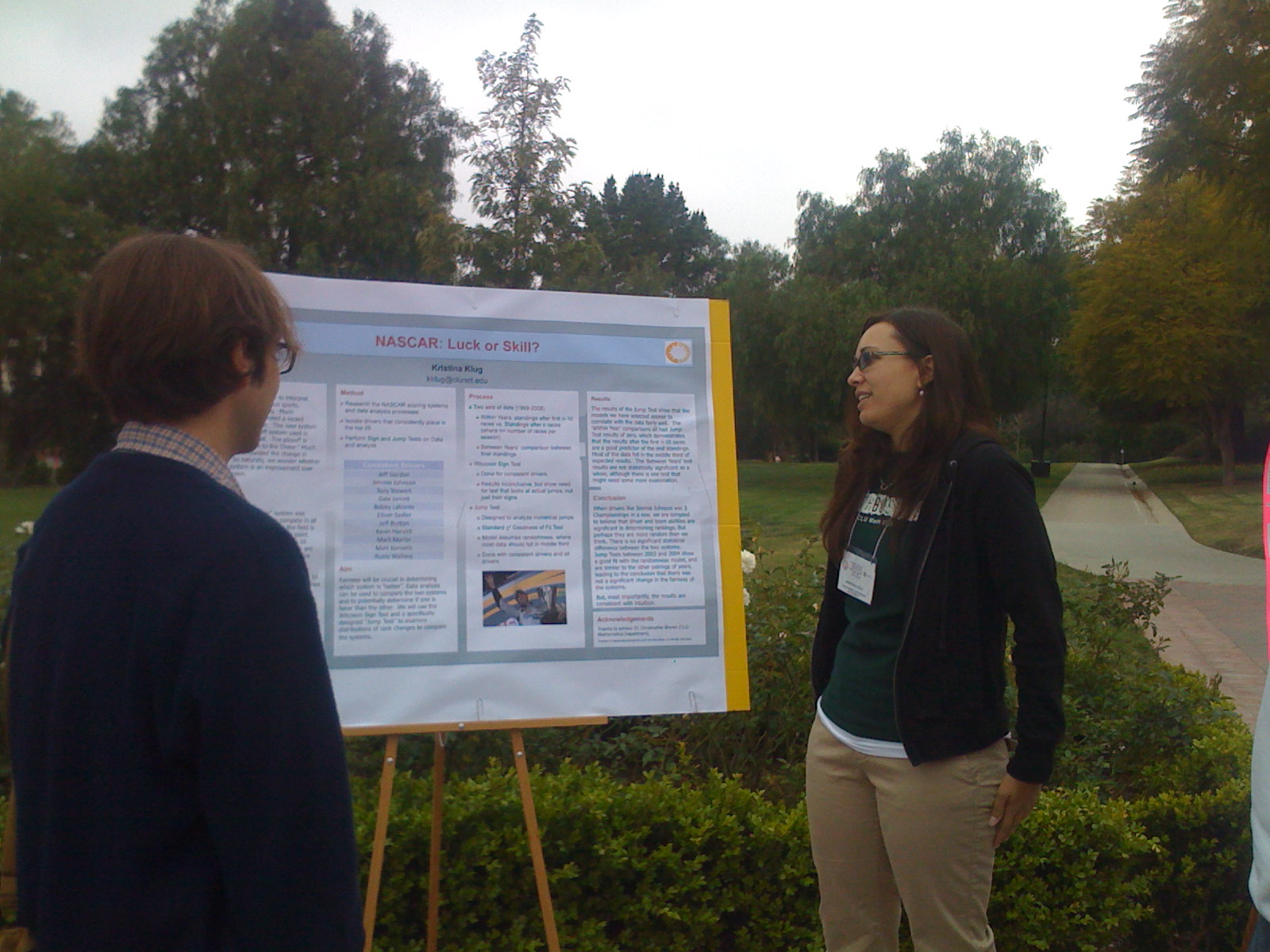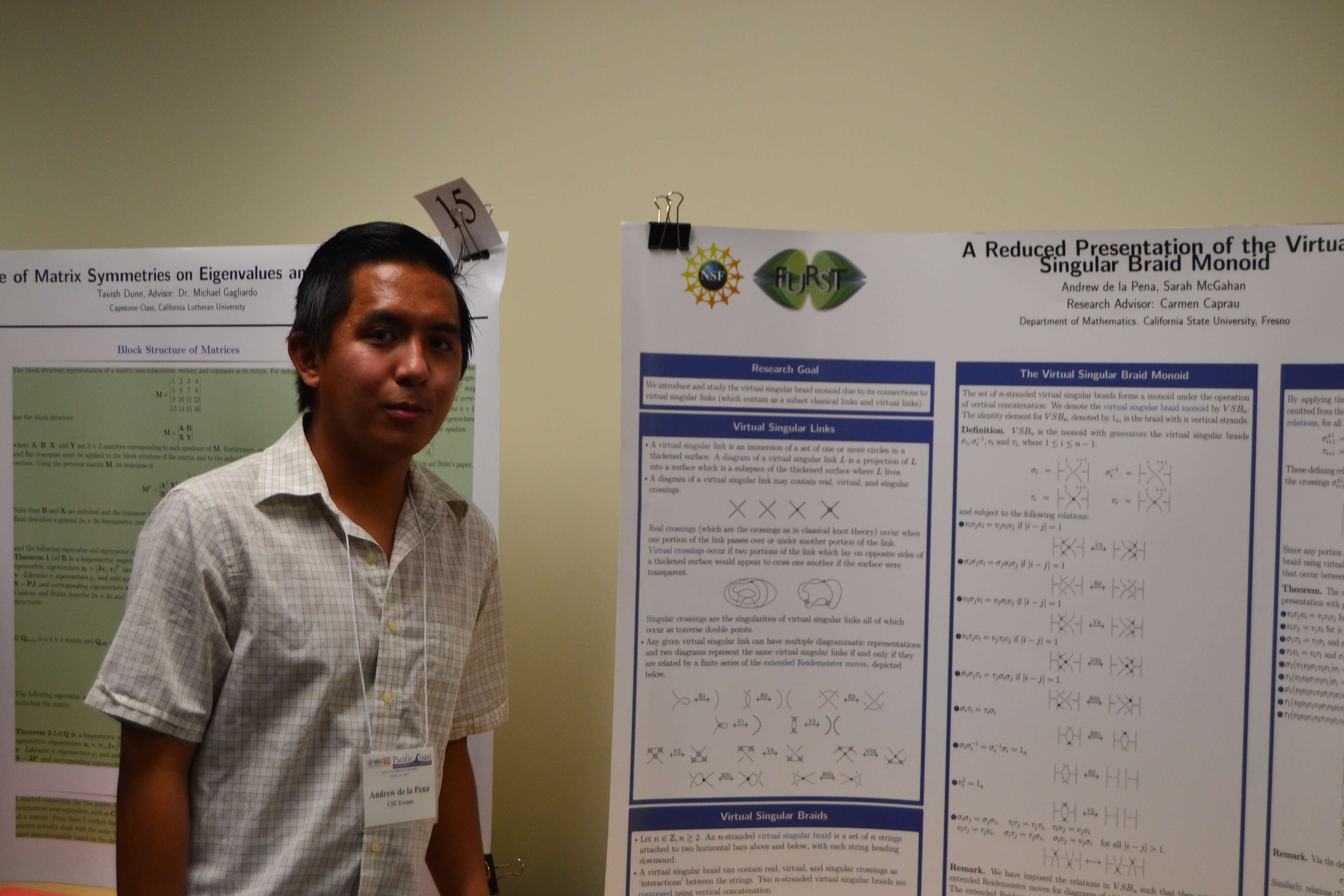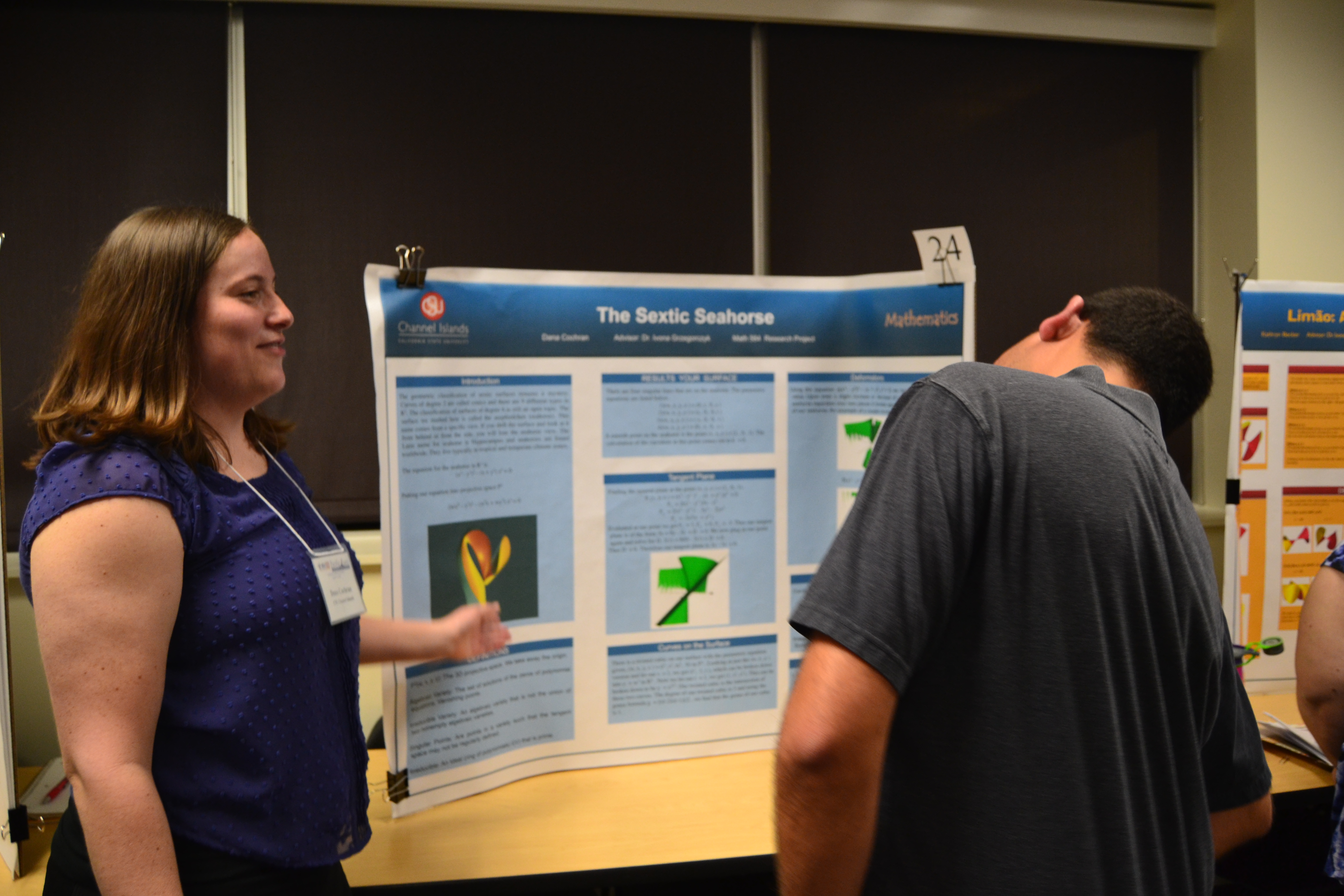Register
Registration is open! You can register online for the conference with a credit card. Priority registration deadline is Thurs Mar 20; online pre-registration closes Wed Mar 26 at 3pm, with online last minute registarion continuing through Mar 29.
Spring 2025 SoCal-Nev Section Meeting
Pepperdine University, Elkins Auditorium
Saturday, March 29, 2025, 8:30am - 3:45pm
(Directions and Map)
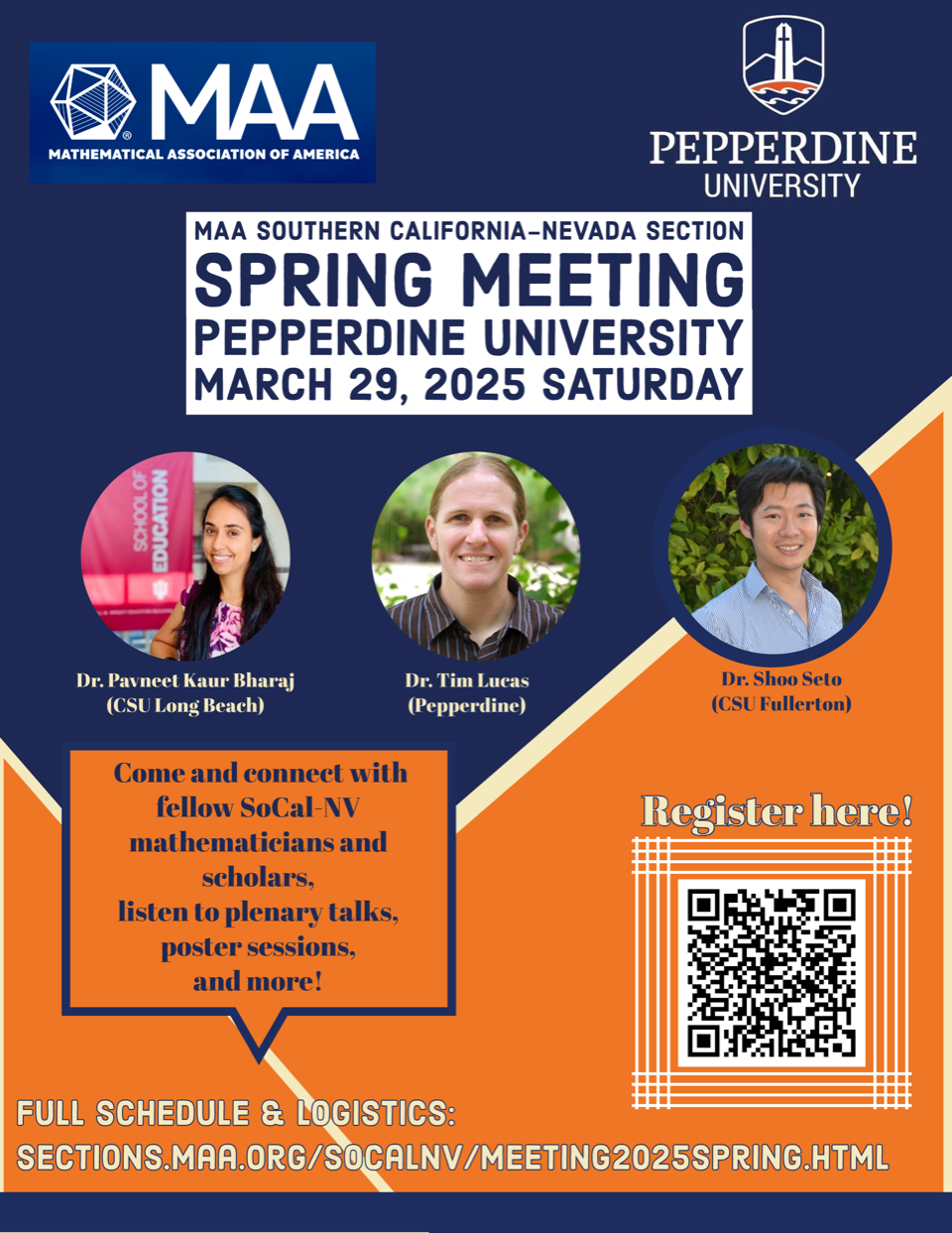
Meeting Program & Site Map
Schedule
- Due to illness, we have had to cancel Pavneet Kaur Bharaj's talk. We wish her a speedy recovery and hope to hear about her work in the future.
- 8:30-12:30pm Registration
Courtyard to left of Elkins Auditorium - 8:30-10:30 Poster Presenter check-in
Courtyard to left of Elkins Auditorium - 9:00 Welcome Remarks
Elkins Auditorium- Land Acknowledgement
Section Welcome by Section Chair Kim Ayers, CSU San Marcos
Welcome by Pepperdine University Provost Jay Brewster
- Land Acknowledgement
- 9:15-10:15 Invited Address by Tim Lucas, Pepperdine University
From Ecology to Modeling Apps - Newts, Crayfish, and Slopes
Elkins Auditorium - 10:15-10:45
Section Business Meeting (open to all attendees)
Elkins Auditorium - 11:00-12:00 Student Poster Session
Organized by Bahar Acu, Pitzer College, Konrad Aguilar, Pomona College, Amelia Stone-Johnstone, CSU Fullerton
Mullins Town Square (weather permitting) - 12:00-1:00 Lunch
(pre-order before 3/20) - 1:00-2:00 Section NExT Workshop (open to all attendees)
Embodied Mathematics Interactive Session
Organized by Matthew Gherman, California Institute of Technology
BPC 191 - 2:00-3:00 Invited Address by Shoo Seto, CSU Fullerton
Hearing Shapes with the Spectrum of the Laplacian
Elkins Auditorium - 3:00-3:10 Conference Photo
- 3:10-3:30 Break and Section Birthday Celebration
- 3:30-3:45 Closing Remarks
Elkins Auditorium
Directions and Maps
Locations on Pepperdine's Campus are viewable on their Interactive Campus Map or the annotated pdf of the campus map. They also provide interactive directions to campus through google maps. Please keep in mind that PCH between Malibu and Santa Monica is still currently closed to general traffic, despite what google maps might say.
Directions to Pepperdine:
- From Hwy 101 north of Pepperdine:
Take Hwy 101 to Las Virgines exit. Turn right onto Las Virgines Rd. and proceed for 9 miles. Along the way the road goes through a tunnel and becomes Malibu Canyon Rd. Turn right onto Seaver Dr. to get onto campus. - From Hwy 101 south of Pepperdine:
Take Hwy 101 to Las Virgines exit. Turn left onto Las Virgines Rd. and proceed for 9 miles. Along the way the road goes through a tunnel and becomes Malibu Canyon Rd. Turn right onto Seaver Dr. to get onto campus. - From Pacific Coast Hwy north of Pepperdine:
Take Pacific Coast Hwy., and turn left on John Tyler Dr. to get onto campus. - From Pacific Coast Hwy south of Pepperdine:
Pacific Coast Highway between Santa Monica and campus is closed to non-resident traffic. Google Maps may indicate it is open because residents can use it, but if you are not a resident, you are encouraged to use Hwy 101 directions above.
- If arriving on Seaver Dr.: Go up to the guard gate and ask for both a visitor parking pass and a parking token to get into the parking lot. Proceed up the hill and go straight at the first stop sign, and pass the building on your left until you see a large parking lot. Turn left into this parking lot. This is the Seaver Main Lot/Central Campus Parking (Parking Lot B). Of the 3 liftgates, use your parking token to take the rightmost one, which leads to the larger parking area. If the parking lot is full, parking on Seaver Drive may be used.
- If arriving on John Tyler Dr.: Go up to the guard gate and ask for both a visitor parking pass and a parking token to get into the parking lot. Proceed up the hill and turn right at the first stop sign onto Banowsky Dr., then when this road ends at a T intersection with Seaver Dr., turn left onto Seaver Drive. Go past the building on the left until you see a large parking lot. Turn left into this parking lot. This is the Seaver Main Lot/Central Campus Parking (Parking Lot B). Of the 3 liftgates, use your parking token to take the rightmost one, which leads to the larger parking area. If the parking lot is full, parking on Seaver Drive may be used.
Directions to registration:
- Once parked in the Seaver Main Lot or on Seaver Dr, walk away from Seaver Drive, toward the ocean. Go down the steps. Elkins Auditorium will be on your right. Registration will be to the left of the entrance to the auditorium. Ramp access: 90 degrees to the left of the steps there is a ramp that goes down to the left and brings you to the front of the library. Go back to the right until you see the bottom of the steps mentioned above.
Guest WiFi access
There is guest wifi at Pepperdine. Look for instructions at the registration table and in the Elkins Auditorium.
Registration Information
All registrations will take place online though Eventbright, even those onsite at the conference. Online Registration will be opening soon, but is not open yet.
Poster Presenters: Application deadline Mon March 17 at 5pm. Students who have been accepted to present a poster do not need to register here as their poster application serves as their registration (max of two free student registrations per poster, additional student poster presenters above 2 need to pre-register here at the student rate).
Priority Registration+ Lunch option: register by Thurs March 20 at 5pm for a lower registration rate, as well as a printed nametag and registration packet. Registering by the priority deadline enables you to add on a lunch to your order. It also minimizes stress and helps us have a more accurate catering count.Online Pre-Registration (no lunch): registering by Wed March 26 at 3pm guarantees a printed nametag and registration packet. It also helps us with planning. There is no longer an option to add a lunch.
On-site/Just-In-Time Registration: All registration is completed online. You can register on-site, but it will be through the online platform and require an online payment method. Your nametag is not pre-printed and a registration packet is not guaranteed. There is no option to order lunch.Registration Fees
| Registration type | by Thurs 3/20 5pm | by Sat 3/29 12:30pm |
| Nonmember | $40 |
$45 |
| MAA Member | $30 |
$35 |
| Student | $15 |
$25 |
Student Poster Presenter |
-- |
-- |
| Lunch Add-on Select the Add-on lunch option when you register before 5pm on Thurs 3/20. Lunch options are listed below and on the registration page. |
3/20. Choice of half sandwich, full sandwich, or salad from Mendocino Farms. See info below.
$16- $20 Lunch add-on |
--- |
Questions about registration
Questions about registration can be directed to Konrad Aguilar, the meeting coordinator.
Lunch Options
If you pre-register by 3/20, you can order a box lunch from Mendocino Farms to pick up at the conference site. Bottled water and an assoortment of sodas will be available with the lunch. The meal choices include the following.
- Vegan Banh Mi Sandwich: organic marinated, baked tofu with vegan aioli, sweet chili sauce, pickled daikon & carrots, cucumbers, jalapenos, Thai basil, cilantro. Includes potato chips & a cookie. Can be ordered as a 1/2 sandwich ($16) or a full sandwich ($20).
- The Modern Caesar Salad with chicken (Gluten Free): curly kale, chopped romaine, housemade superfood krunchies, shaved
Grana Padano cheese, red onions, grape tomatoes, avocado, lemon
squeeze with classic Caesar dressing. Includes an apple & a cookie ($20) - Chicken Pesto Caprese Sandwich: shaved, roasted chicken breast, fresh mozzarella, marinated red peppers, basil pesto, mixed greens, balsamic glaze drizzle. Includes potato chips & a cookie. Can be ordered as a 1/2 sandwich ($16) or a full sandwich ($20).
While there are restaurants near by, they are not within walking distance of campus.
You are always welcome to bring your own lunch and eat at the conference site.
Pavneet Kaur BharajCSU Long Beach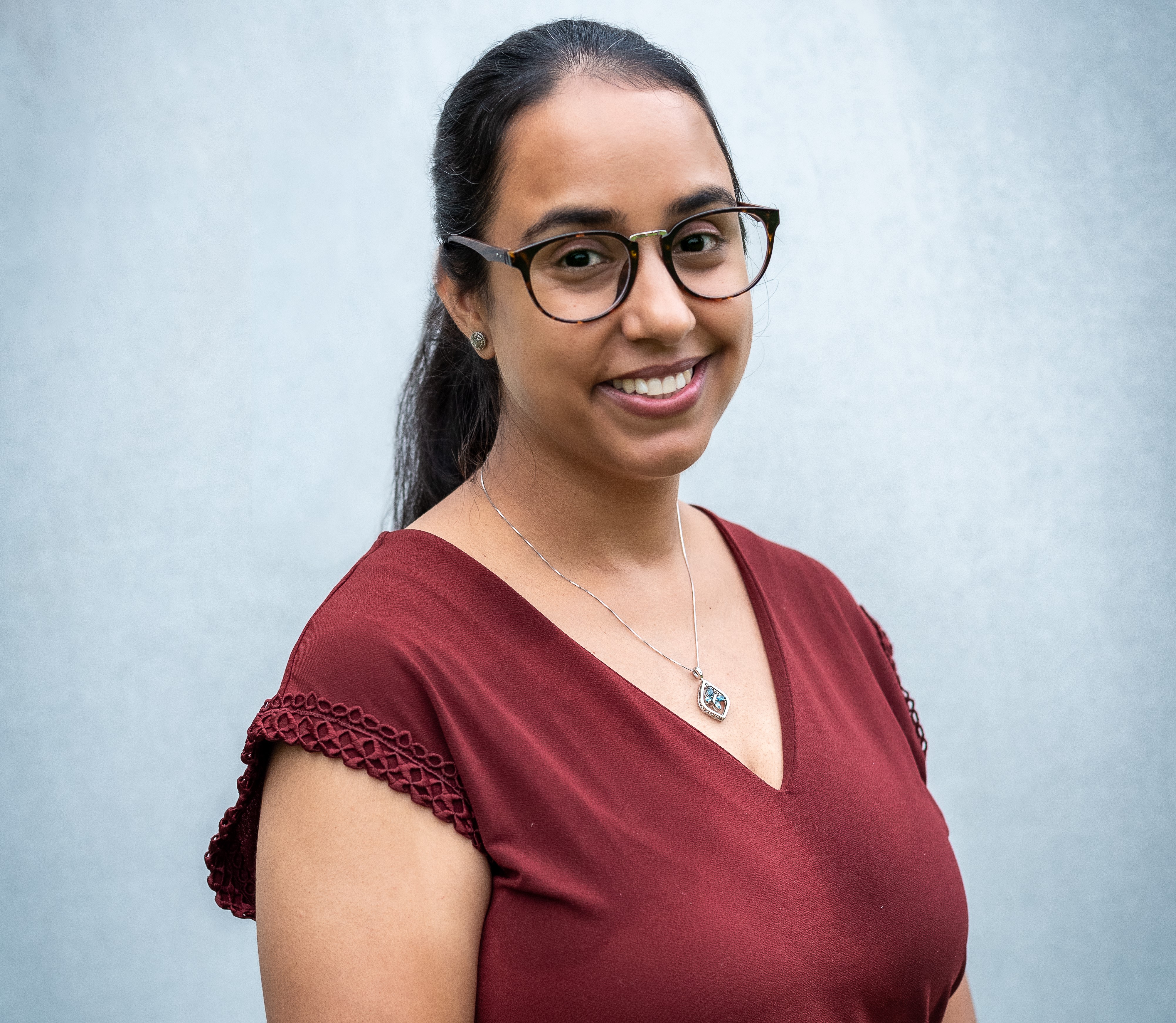 |
Dr. Pavneet Kaur Bharaj is an Assistant Professor of Mathematics Education in the Department of Mathematics and Statistics at California State University, Long Beach. Before joining CSULB, she was an Assistant Professor in the Teacher Education Department at California State University, Bakersfield. She completed her postdoctoral studies at the University of Massachusetts Boston and earned her Ph.D. in Mathematics Education from Indiana University Bloomington. She also holds a double master’s degree in Mathematics and Education from India. Dr. Kaur Bharaj is particularly interested in unpacking different aspects of mathematics education—whether through exploring the experiences of teacher educators, in-service teachers, and pre-service teachers, or through critically analyzing existing documentation that shapes discourse in the field. Her work extends to various aspects of mathematics teacher education, particularly examining ways to enhance teacher preparation and professional development. Outside of academia, Dr. Kaur Bharaj enjoys spending time with her husband and toddler, embracing family moments alongside her professional pursuits. |
Unpacking Mathematics Education Research: Insights from Multiple Perspectives
In this keynote session, I will explore various aspects of mathematics education research that contribute to a comprehensive understanding of the field. With a focus on teacher education, I will discuss different avenues I have examined—including mathematics pre-service teachers, mathematics in-service teachers, mathematics teacher educators, and the review of existing documentation in the mathematics education field—to identify both the strengths and areas for growth within each. Grounding my work in Bronfenbrenner’s Ecological Systems Theory, I will highlight how different factors shape mathematics teachers' learning, instructional decisions, and professional identities. I will share insights from my research journey as a mathematics teacher educator, reflecting on the evolving landscape of the field and the key considerations for fostering meaningful learning experiences. This session aims to spark dialogue on how we can collectively build a more robust understanding to mathematics education research and practice.
Timothy LucasPepperdine University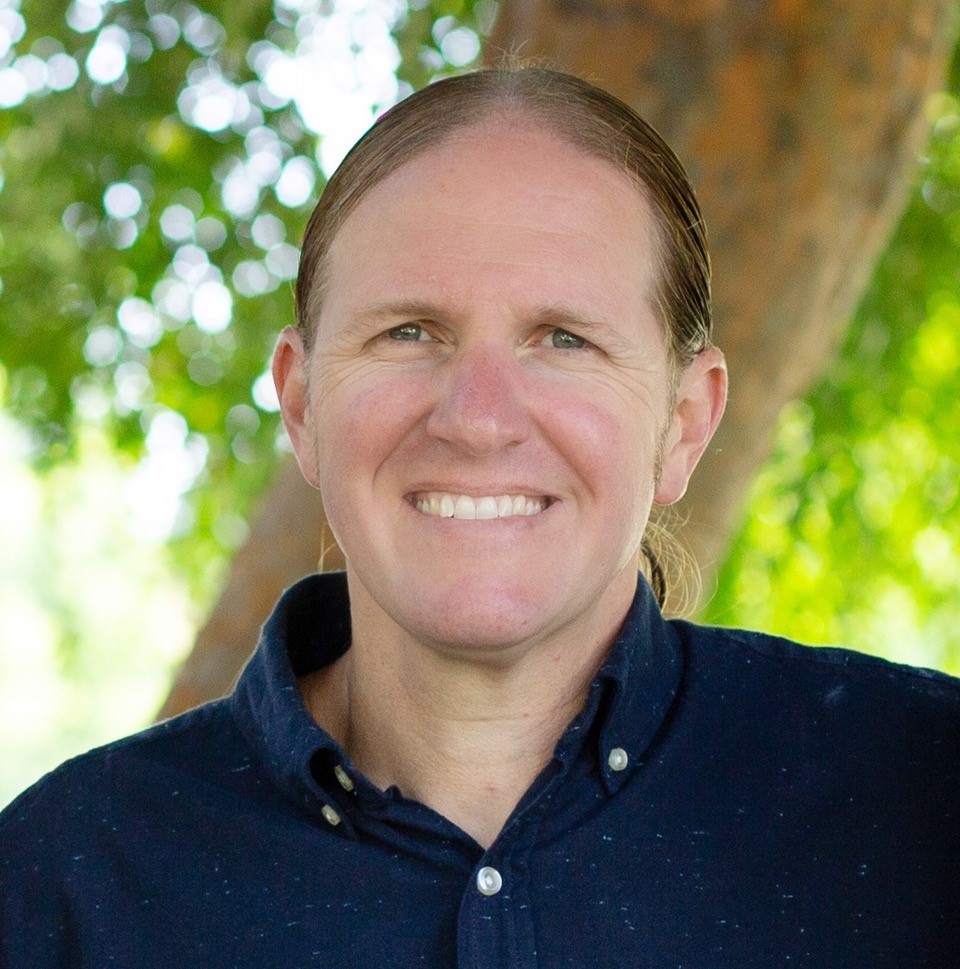
|
Tim Lucas is a Professor of Mathematics at Pepperdine University. He earned his Ph.D. in mathematics at Duke University in 2006. In his research, Dr. Lucas collaborates with undergraduates to construct and analyze mathematical models of biological processes. This includes a discrete-time population model of chaparral vegetation response to frequent wildfires and an agent-based model that incorporates plant growth and competition for resources. He has also used discrete-time population models and agent-based models to predict whether California newt populations can persist given severe drought and the invasion of non-native crayfish. Dr. Lucas has also researched how using iPads in the classroom transforms the learning space and facilitates social interaction. Inspired by that work, he developed two mobile apps for visualizing solutions to ordinary and partial differential equations called Slopes and Waves. |
From Ecology to Modeling Apps - Newts, Crayfish, and Slopes
This talk presents two simultaneous, interdisciplinary, student-driven projects in the areas of ecological modeling and educational tools. I will introduce a model for studying the population dynamics of the California newt (Taricha torosa), a species of special concern in California, which have been decimated by invasive crayfish (Procambarus clarkii) in Santa Monica Mountain streams. Jointly with Courtney Davis, we evaluated either the persistence or time to extinction for newt populations under crayfish trapping regimes when varying the trapping capacity, frequency of trapping implementation, and susceptibility of crayfish to trapping. These models of crayfish management also present interesting examples for differential equations students. I will introduce in-class activities that emphasize a visual understanding of these models to reinforce key concepts such as bifurcations. The primary tool for these investigations is Slopes, a mobile application with an intuitive interface that is designed to visualize solutions to differential equations and support active learning in the classroom. By making slopefields, phase planes and numerical solutions more accessible, students can engage in higher level discussions of mathematical models that incorporate differential equations. Slopes is available for iPads, iPhones, and Android phones, which are highly portable and feature larger touch screens that allow students to view and manipulate content easily. In a recent study, Krista Lucas and I found that students used Slopes to visualize solutions, aid in discussion and cooperation, build prototype models, and demonstrate understanding of differential equations concepts. I will conclude with examples of semester-long modeling projects enhanced by the use of Slopes.
Shoo SetoCSU Fullerton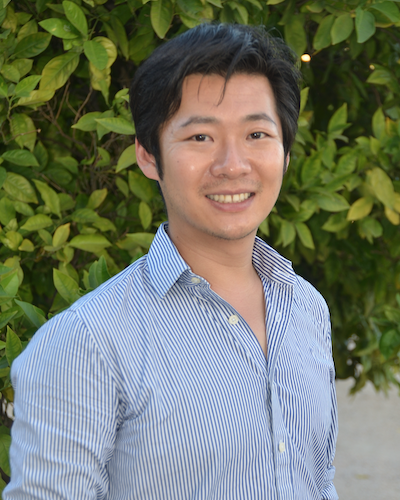 |
Dr. Seto is an assistant professor at CSU Fullerton working on problems in geometric analysis. In particular, his interests are in the spectrum of the Laplacian as well as parabolic and elliptic equations involving the Laplacian. He received his Ph.D. at UC Irvine, and held positions both as a postdoc at UC Santa Barbara and as a lecturer at UC Irvine, before beginning his position at CSUF. |
Hearing Shapes with the Spectrum of the Laplacian
In this talk, we will introduce a differential operator called the Laplacian which plays an important role in many fields of mathematics and has many applications outside of mathematics as well. By studying its spectrum (or eigenvalues) we can determine the way the Laplacian behaves and how the underlying geometry plays a role in solutions to equations involving the Laplacian. The materials will be self-contained and only some familiarity with calculus concepts will be assumed.
Section NExT Workshop:
Embodied Mathematics Interactive Session
Embodied mathematics activities involve students engaging in physical actions to help them better understand mathematics concepts. Current research shows these types of activities have great potential to help students develop conceptual understanding. Matthew Gherman, the Section NExT liaison, will lead an interactive session to introduce embodied mathematics, attempt some examples, and brainstorm potential embodied activities in your classroom.
Student Poster Session
Students (undergraduate and graduate) are invited to submit short proposals for the Poster Session of the Spring 2025 Section Meeting of the MAA, taking place on Saturday, March 29 at Pepperdine University.
Here are some ideas of what students can present:
- Results of masters thesis, honors, senior, or independent study projects
- Results of classroom projects or modeling contests
- Results of REUs or other summer research programs
- Historical investigations in pure or applied mathematics
- Solutions of problems from the Putnam Exam or from the Monthly or other journals
Applications to present in either the poster session is closed. Applications include submitting an abstract (max 150 words) and were due by 5pm on Mon March 17, 2025.
The application to submit a poster constitutes registration for the conference (up to two presenters per poster). Additional presenters beyond two should register for the meeting through the online registration.
The MAA Mathematical Communitcation website has useful articles about giving an effective talk, including poster presentations (scroll down to that heading) and also writing an abstract. Be sure to check out their helpful tips!
Direct questions to the Program Board: Bahar Acu (Bahar_Acu@pitzer.edu), Konrad Aguilar (konrad.aguilar@pomona.edu), and Amelia Stone-Johnstone (astonejohnstone@Fullerton.edu).

